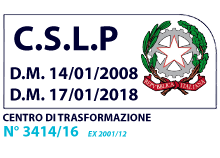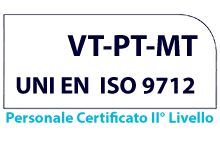2) Ministerial Decree 14/01/2008 (Tenic Standards for Buildings)
The technical standards for buildings collect in a single organic text the rules previously dealt with in several ministerial decrees and "define the principles for the design, execution and testing of buildings in respect of the performance they require in terms of the essential requirements of mechanical strength and stability, even in the event of fire, and durability. They therefore provide the general safety criteria, specify the actions that must be used in the project, define the characteristics of materials and products and, more generally, deal with aspects related to the structural safety of works »
The full text of the Decree can be consulted at the following link:![]() D.M.14/01/2008.pdf or directly from the website of the Higher Board for Public Works at the following address: www.cslp.it
D.M.14/01/2008.pdf or directly from the website of the Higher Board for Public Works at the following address: www.cslp.it
As an informative note, it has been stressed that for some years the offices have been working to issue a new revision of the Technical Building Regulations and for this purpose at the meeting of 14 November 2014 the CSLP has expressed its favorable opinion on the revised draft, dedicated, at the following link:www.CSLP.it/NTC2014 he committee's opinion and the draft revision proposal can be downloaded for information purposes.
Previous Technical Standards for Construction in Italian Legislation
- Ministerial Decree of 30 May 1974, Technical Regulations for Execution of Normal and Pre-Compressed Concrete Works and Metal Structures
- Ministerial Decree of July 27, 1985, Technical Regulations for Execution and Testing of Structures in Concrete and Pre-Compressed Metal and Metal Structures
- Ministerial Decree of 20 November 1987, Technical standards for the design, execution and testing of masonry buildings and for their consolidation
- Ministerial Decree of 9 January 1996, Technical Standards for the Calculation, Execution and Testing of Structured Concrete and Pre-Compressed Structures and Metal Structures
- Ordinance of 20 March 2003, no. 3274 of the President of the Council, First Elements on General Criteria for Seismic Classification of National Territories and Technical Regulations for Seismic Construction
- Ministerial Decree of 14 September 2005, Technical Standards for Construction
As already pointed out in the previous article Certified Railings, General Aspects, the aforementioned decree fixed in Chapter 3 Construction Actions, the horizontal load for which the parapets are to be designed, is specifically designated as a project variable variable load Hk of 2kN / m (Table 3.1.II category C2 Balconies Ballatoi and Common Scales), this load must be applied to the upper part of the handrail.
Il soddisfacimento della prescrizione può essere documentato anche per via sperimentale, e comunque mettendo in conto i vincoli che il manufatto possiede e tutte le risorse che il tipo costruttivo consente.
On discrimination between residential areas (category a) and category C2 Balcony Balconies and Municipal Stairs, it has been widely discussed in dissemination seminars and the key concept is that Scales and Balconies for whatever type of construction is to be the way of exodus or natural harvesting point in the event of a fire therefore are to be considered as areas subject to crowding, for consistency it is possible to note that for the balconies and the stairs the vertical project load is 4kN / m2, for those who are interested we report inl link to the opinion drawn from Dott.Ing. Pierpaolo Cicchiello Progetto dei Parapetti.pdf.
Although the great community of designers is most devoted to the main / primary elements of a structure, it is important to note that such a decree (as the previous ones now repealed) provides that the parapets must resist a certain action, and for that purpose they must be "designed ", while admitting vertebral verification, in fact placing such artefacts between the structural elements of a construction and as indicated in Annex I to Regulation (EU) 305/2011 must meet the requirement of mechanical strength and stability, implying in fact that the parapets must be manufactured by a certified carpentry according to UNI EN 1090 and that such artefacts can not be marketed in the absence of a suitable (DoP), without committing the wrongful act.






